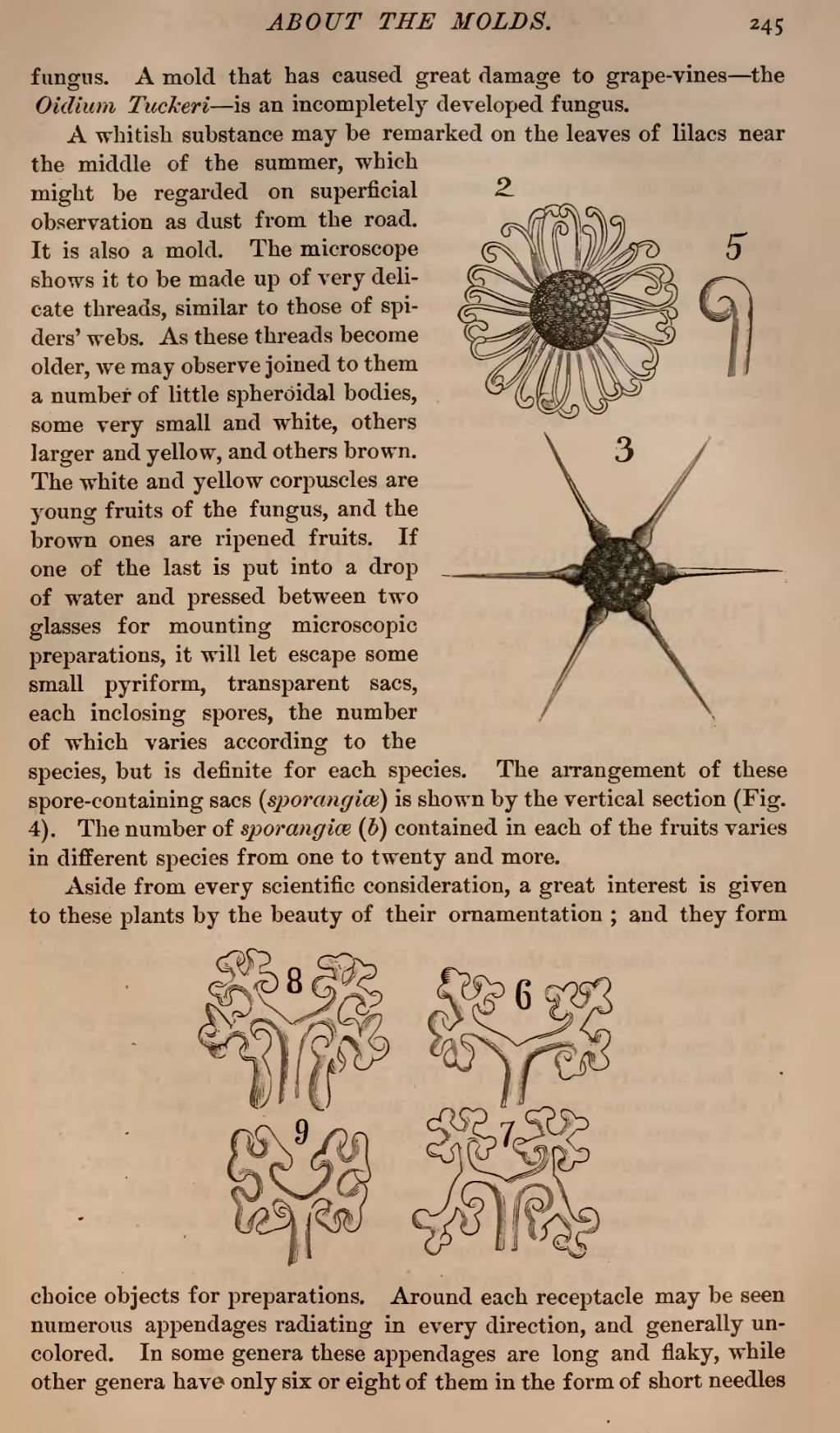fungus. A mold that has caused great damage to grape-vines—the Oidium Tuckeri—is an incompletely developed fungus.
A whitish substance may be remarked on the leaves of lilacs near  the middle of the summer, which might be regarded on superficial observation as dust from the road. It is also a mold. The microscope shows it to be made up of very delicate threads, similar to those of spiders' webs. As these threads become older, we may observe joined to them a number of little spheroidal bodies, some very small and white, others larger and yellow, and others brown. The white and yellow corpuscles are young fruits of the fungus, and the brown ones are ripened fruits. If one of the last is put into a drop of water and pressed between two glasses for mounting microscopic preparations, it will let escape some small pyriform, transparent sacs, each inclosing spores, the number of which varies according to the species, but is definite for each species. The arrangement of these spore-containing sacs (sporangiæ) is shown by the vertical section (Fig. 4). The number of sporangiæ (b) contained in each of the fruits varies in different species from one to twenty and more.
the middle of the summer, which might be regarded on superficial observation as dust from the road. It is also a mold. The microscope shows it to be made up of very delicate threads, similar to those of spiders' webs. As these threads become older, we may observe joined to them a number of little spheroidal bodies, some very small and white, others larger and yellow, and others brown. The white and yellow corpuscles are young fruits of the fungus, and the brown ones are ripened fruits. If one of the last is put into a drop of water and pressed between two glasses for mounting microscopic preparations, it will let escape some small pyriform, transparent sacs, each inclosing spores, the number of which varies according to the species, but is definite for each species. The arrangement of these spore-containing sacs (sporangiæ) is shown by the vertical section (Fig. 4). The number of sporangiæ (b) contained in each of the fruits varies in different species from one to twenty and more.
Aside from every scientific consideration, a great interest is given to these plants by the beauty of their ornamentation; and they form

choice objects for preparations. Around each receptacle may be seen numerous appendages radiating in every direction, and generally uncolored. In some genera these appendages are long and flaky, while other genera have only six or eight of them in the form of short needles
